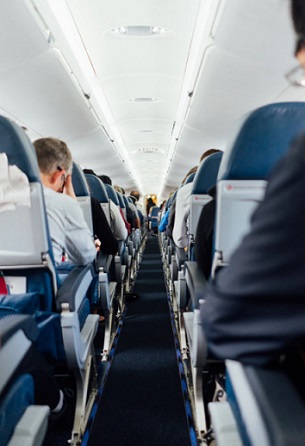 Many airlines are ready to deal with Lithium battery fires in the confined spaces of aircraft passenger compartments
Many airlines are ready to deal with Lithium battery fires in the confined spaces of aircraft passenger compartments
 All these everyday devices are powered by Lithium-ion batteries
All these everyday devices are powered by Lithium-ion batteries
 An AvSax Lithium battery fire mitigation bag
An AvSax Lithium battery fire mitigation bag
Transporting Lithium batteries can be fraught with danger … yet aircraft can be one of the safest places to be if the airline company is geared up to deal with the problem.
In recent times we have seen container ships badly damaged by fires caused by Lithium battery fires and, according to the Federal Aviation Administration in the USA, lithium battery cargo shipments were implicated but not proven to be the source of fires which brought down three cargo aircraft in just 5 years.
Lithium-ion batteries are regulated as a hazardous material (dangerous goods) for all modes of transportation but logistics magazine The Loadstar recently reported that some companies are misdeclaring cargo and this has been implicated in a number of near-miss incidents on ships with false declarations including labelling them as ‘computer parts.’
Lithium battery fires are very dangerous as they can continue to burn even when starved of oxygen and can flare up again even hours later. The only way to effectively tackle them is to cool down the individual cells which is nearly impossible in packed containers on ships, trains and cargo planes.
But Lithium batteries power all our modern electronic devices including mobile phones, iPads and laptops – the kind of devices that are taken on board each aircraft in their hundreds by passengers.
Lithium battery fires can and do happen on passenger aircraft. Up to the start of June 2022, the Federal Aviation Administration (FAA) in the USA has recorded 373 aviation-related incidents involving lithium batteries carried as cargo or baggage since January 23, 2006.
These are just the events the FAA is aware of – there may well have been many more worldwide.
Airline companies can take no chances as a fire on a plane can have potentially catastrophic consequences with the fire giving out immense heat, flames and toxic fumes … and that’s before the risk of the device exploding.
That’s why passengers now need to take all their personal electronic devices – along with any spare batteries – into the passenger compartment so if they do catch fire the cabin crew can deal with it.
The airline industry is well aware of the dangers which is why AvSax Lithium battery fire mitigation bags are now on board more than 80 airline companies operating 15,373 aircraft worldwide – including some of the biggest names in the industry. AvSax are most widely deployed battery ‘burnbags’ by far and won the Queen’s Award for Enterprise in the UK for their innovation which is the highest award any business can get.
AvSax thermal containment bags are unique in that they are designed to continually cool the overheating battery by adding water into the bag once the device has been put in there.
The water is absorbed into the sides of the bag which then expand and close in around the device, stifling any potential flare-up. The bag is made of military-grade material which means it can withstand the force of a blast even if the device explodes.
This use of liquid is recommended by the Civil Aviation Authority in the UK and many other fire containment bags don’t work this way.
In its guidance the CAA states: “Since the development of the International Civil Aviation Organization (ICAO) guidance on dealing with an in-flight battery fire, new products designed for use in response to lithium battery thermal runaway events have become available.
“Products which provide both a cooling and containment capability are typically more aligned to the existing ICAO guidance as when used they are filled with water or other non-flammable liquid to act as a cooling agent.
“After knocking down flames it could conceivably take just a couple of seconds for a personal electronic device to be placed inside a containment bag, allowing it to be moved to a place of safety. Passengers could then return to their seats, mitigating potential unrelated safety hazards such as injury in the case of severe turbulence. Equally, the effect on flight crew in carrying out their duties following an event on the flight deck would be minimised.”
AvSax have been used 33 times to deal with emergencies since the start of 2017 and every time they have been deployed the aircraft has been able to complete its journey safely with no need to divert or make an emergency landing. Diversions can be very costly to the airline company and can even run into hundreds of thousands of dollars.